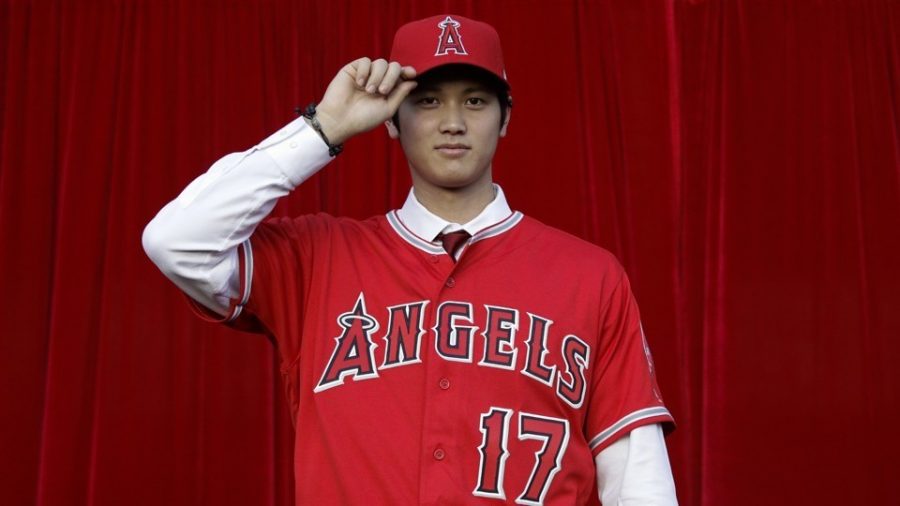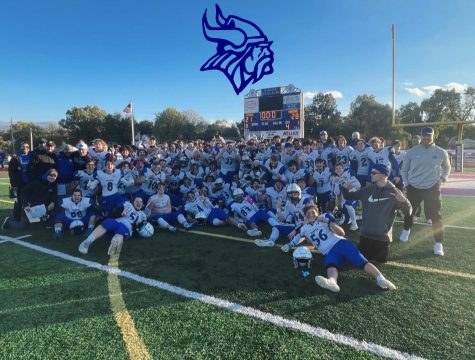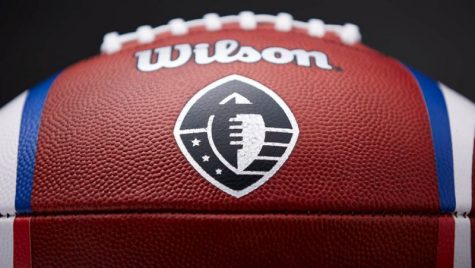SHO-TIME Comes to Anaheim and the MLB
Major League Baseball is ripe with exciting young superstars. There’s the wild, flashy Bryce Harper, and his buddy Kris Bryant, the calm and smooth third baseman from the Chicago Cubs. There’s a 5’6 slugger Jose Altuve, and there’s a 6’7” slugger Aaron Judge. There are at least fifty game-changing capable players, and fifty different types of players. The MLB is complete with superstars; every type of player imaginable exists somewhere in the game. Or do they?
There’s one player dynamic the game has missed since Babe Ruth: the two-way player. A two-way player is a player that is both a pitcher and a hitter. Shohei Ohtani, the Japanese sensation of the Los Angeles Angels, is attempting to do just that.
Ohtani made his professional debut in 2013, at age 18, for the Hokkaido Nippon-Ham Fighters in the NPB in Japan. The league is very similar to the MLB in terms of rules, and is the highest league in Japan. After a breakout 2016 season, he battled injuries in 2017; however, he was ready to take the next step.
The MLB has a posting system with Japanese players, which has brought the likes of Ichiro and Masahiro Tanaka to the MLB. Because Ohtani is 25, he was only eligible for a minor league contract. With Ohtani entering at 23, every team felt they had a shot to sign the young phenom.
After a well-documented recruiting process, Ohtani decided to sign with the Angels, over most notably the Cubs, Rangers, and Giants. While the Angels had to pay the $20 million posting fee to the Hokkaido Nippon-Ham Fighters, Ohtani was signed to a deal totalling a little over $2 million—a huge bargain for an elite caliber player.
On paper, Ohtani is the piece the Angels need, adding another key piece to the young core highlighted by Mike Trout. Well regarded as the best player in the game, Trout has been an all-star in each of his six full seasons, and has won two MVPs. However, the Angels have only made the playoffs once—a brief stay in 2014 after being swept by the Royals. The team struggled with to build a contender with the bad contracts of Albert Pujols, C.J. Wilson, and Josh Hamilton, and suffered through two bad years and a lot of losses. With the window to win a World Series with Trout under contract closing, the team needed to get competitive immediately.
Ohtani would produce standalone value just as a pitcher. A right-handed pitcher with the ability to hit 100 mph, he’s already been compared to Yu Darvish of the Cubs, and has shown potential to be even better. The. NPB teams traditionally use a six-man rotation, opposed to the MLB’s five-man rotation standard. The Angels likely made a point of moving to a six-man rotation when negotiating with Ohtani. This works out for Ohtani by putting him in a more comfortable routine, but it has other merits for the Angels. The Angels are notorious for their awful pitching health luck, as their headline pitchers of Garrett Richards, Tyler Skaggs, Andrew Heaney, and Matt Shoemaker have all flashed potential, but have all missed long periods of time due to injury. The Angels might have a rare instance where the six-man rotation could work, as it would benefit all these injury prone players by giving them more rest in between outings.
Ohtani has three starts to his name, two good and one bad. In his pitching debut in Oakland, Ohtani pitched 6 solid innings, with the only blemish a three-run homer by Matt Chapman, and picked up a win. The following against the Athletics-this time at home-Ohtani took a perfect game into the seventh inning, and ended up going 7 scoreless with 12 strikeouts, and got another win. He struggled against the Red Sox, giving up 3 earned in 2 innings before leaving with a blister. Manager Mike Scioscia said Ohtani should be able to play through it, but could be a nagging problem worth monitoring.
Hitting wise, there were more questions about Ohtani. He showed tremendous power in the NPB, but the MLB is a whole different animal. It takes a special type of hitter to make it in the MLB. Ohtani did little to impress at the plate in Spring Training, hitting a dismal .125. It was apparent he needed time to adjust to big league pitching. He got all the jitters out in Spring because he started the regular season on a tear. His first at bat on Opening Day was a modest single to the right side, and he hasn’t looked back since. In his first at bat at Angel Stadium, he hit his first career home run to right center. That kicked off a three game home run streak for Ohtani, including one off reigning Cy Young winner Corey Kluber. As of now, Ohtani is hitting .367 with 11 RBIs to go with the 3 home runs.
So what caused the turnaround? One way he did this was with the front foot motion. A left-handed hitter, Ohtani came into the states with a big right leg kick. Harold Reynolds of MLB Network pointed out on MLB Tonight how Ohtani had eliminated the big leg kick by the regular season and moved to a simple toe tap. The move does not hinder the amount of power Ohtani creates, and causes less movement, which makes for a simpler swing. Another concept the MLB Tonight crew discussed was the better batters eye, or how easily the batter sees the pitch. Major league stadiums tend to be more consistent in this area, whereas Spring Training venues have more varying backdrops.
Ohtani has started out hot, but he will go through struggles, as every baseball player does. As teams get more game film on him and derive more informed pitching approaches, Ohtani will have to make his adjustments as well. This is a necessary step for all young pro players. The hardest part is that he can’t play every day. He won’t hit on games he pitches, nor will he on the games before and after he pitches. That gives him three games of hitting per pitching cycle, and that could be less if they want to sit him against some left-handers. Baseball is a game of rhythm, and if he isn’t playing every day, it is tough to find consistency.
The Angels have gone all in. In addition to acquiring Ohtani, they traded for a veteran second baseman Ian Kinsler, signed former Reds shortstop Zack Cozart, and extended Justin Upton’s contract. This time they hope it works, and so far it is. Currently 13-3, the Angels are off to a hot start in 2018, and have a 3 game lead on the defending champion Houston Astros in the AL West. Whether they keep that up for the next 5 ½ months is a mystery, but so far things seem to be clicking. Much of the Angels postseason success will depend on Ohtani can contribute, so he must play a key role.
Maybe one time Ohtani’s name will be in the same conversation as Ruth, or maybe he will struggle and be out of the league in a few years. Maybe he will have to pick a position, as Ruth had to when the Yankees acquired him to play exclusively first base. But for now, Ohtani’s early career has been one of the more intriguing stories to follow, and will continue to be so throughout the season.






